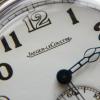Help with a Rolex 645 please.
-
Recently Browsing
- No registered users viewing this page.
-
Topics
-
Posts
-
Some of the Chinese tools ae great and can be purchased at a fraction of the price of Swiss ones, some are complete garbage and some I'm convinced are coming out the same factory as the branded ones.
-
I found this string about this problem. I've not gone through it all, but I believe it also mentions making a spring. If not in this string, the info is online.
-
No, I now realise it’s broken😥 ive looked for one online, but v. Expensive! im going to service as is, in the hope that one turns up. Thank you.
-
Retired electronic engineer getting in to watch making. Looking forward to learning fresh everyone.





Recommended Posts